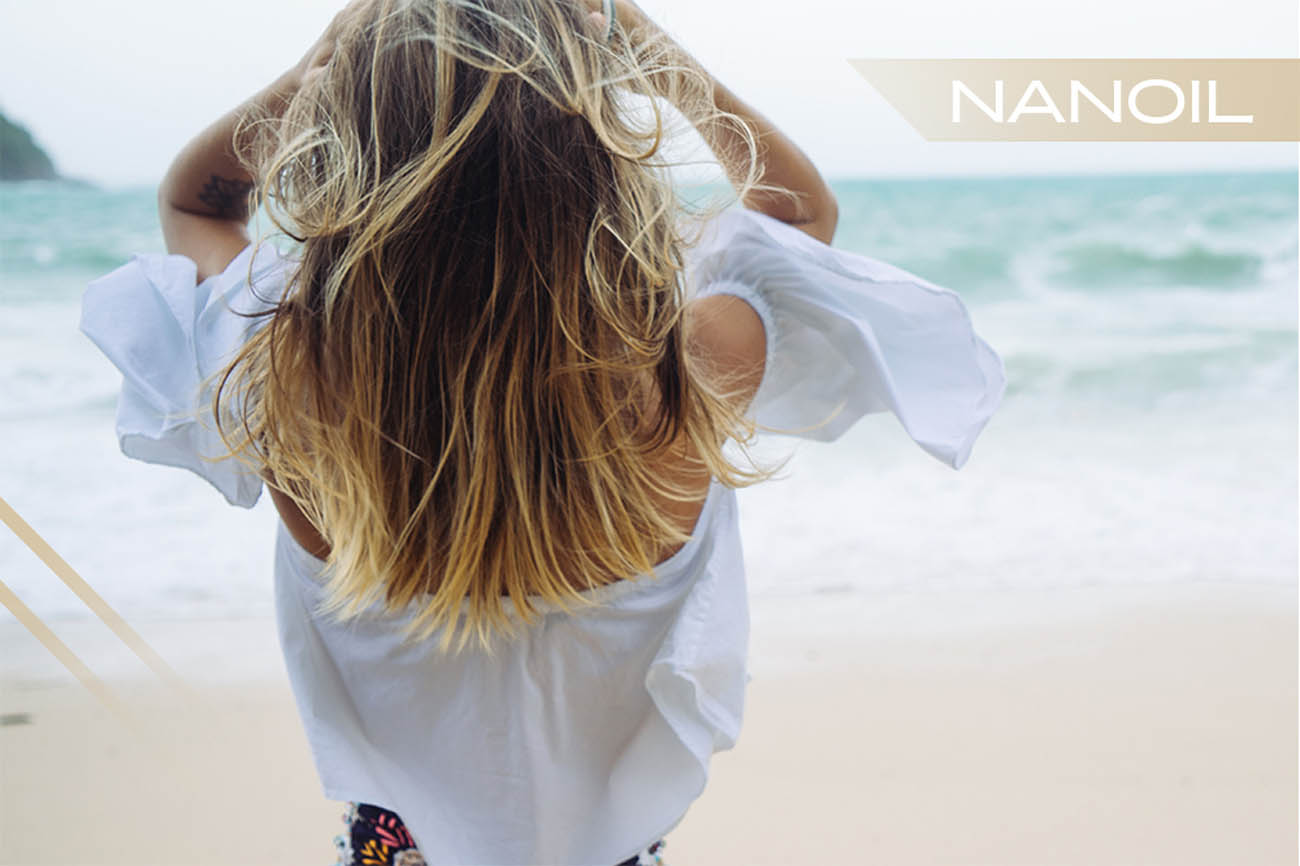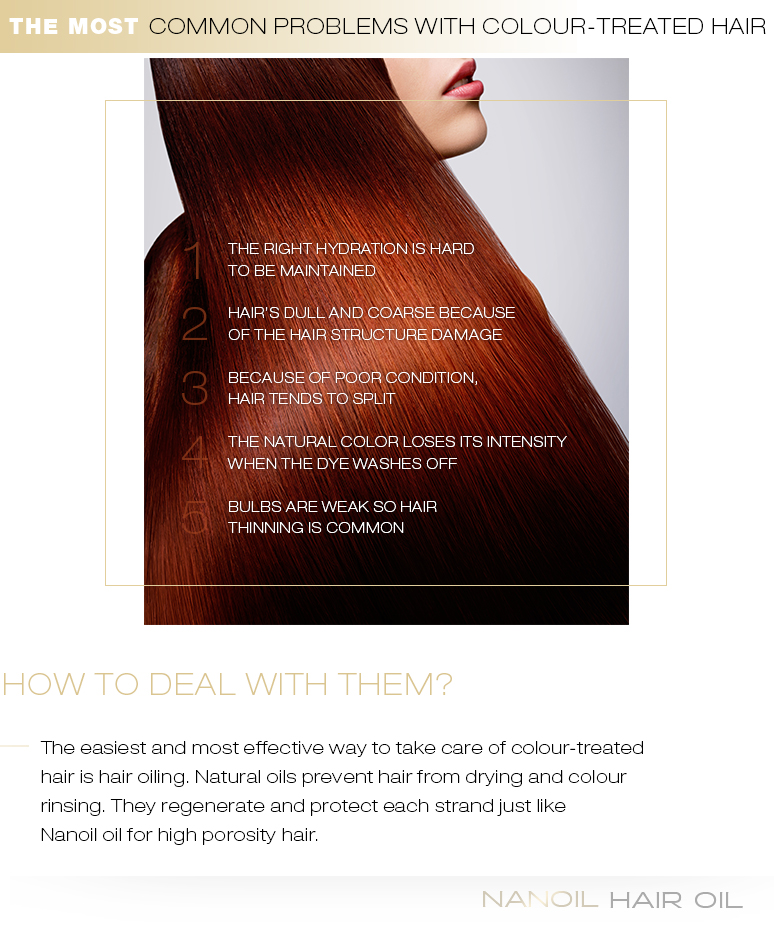- NANOIL Products
- Oils
- Face serums
- Hair masks
- Shampoos
- Hair conditioners
- Hair styling
- Hair Porosity Test
- Blog
- Contact

The change of hair color just gives an impression of prettier and better-nourished hair. In reality, it needs a special care routine and must be treated in a gentle way. How to care for the color-treated and bleached hair? Check what your hairdo wants to tell you.
No matter the dyeing method, hair loses its natural vitality. Chemicals of dyes change the hair structure, which leads to most common problems e.g. dullness and dryness. You should know how coloring treatment affects your hair and what an effective color-treated hair care looks like.
We rarely realize the extreme harmfulness of coloring for the hair. Obviously, if the dye’s shade is well-matched, it enhances women’s looks. Sadly, if you don’t take good care of the hair after coloring, the effect’s going to be temporary. A big price will be paid for a short-lived appearance improvement.

The treatment means a chemical interference which affects the condition and appearance of strands, no matter the method. While dyeing, the hair structure is changed and strands start to get damaged without the permanent nourishing, protection and moisture. The hair porosity matters, too, but you can read about it in other posts. A quick reminder – hair’s protected by a shield of cuticle scales which open and close.
The first stage of the treatment involves opening the cuticle scales with chemical products so the dye easily penetrates the hair stem. During the last stage, the scales are closed and the hair’s protected with a special conditioner. It remains a fact, though, that this kind of ‘exercising’ leads to the damage of cuticles thus the natural hair protection is weaker. Bleaching is even more harmful; after raising the scales, the natural hair pigment is removed due to the oxidization process.
Another must-know info; strong ingredients of dyes may cause allergies and scalp irritation, and consequently, weaken the hair bulbs and follicles. This means e.g. thinning, disturbed hair growth, etc. Obviously, the damage degree depends on the quality of dyes, on how often coloring is done and what the hair care looks like after the treatment. Conclusion? Yes, wrongly-done coloring damages the hair.
The right care routine after and during the coloring may let you minimize the damage. It’s possible because we know more about hair needs and there’s a wide range of nutrient-rich products. The Olaplex treatment is getting more popular among women; it combines coloring with reconstructing the damaged hair structure and strengthening. It’s a great solution but caring for hair after coloring pays off, too. How to get round to it?
How to wash color-treated hair? Actually, what’s the best time? Professionals advise that first washing should be done 24 hours after the treatment the soonest. It’s worth remembering if you want to keep the intense color longer. If you wash the hair right after coloring, the pigment may wash off and fade away. Additionally, you should use cool water for the final rinsing every time you wash your hair. The low temperature closes cuticle scales and lets nutrients and pigment stay inside the hair. We should remember that every hair wash brings you a step closer to reducing the color intensity. That’s why you shouldn’t do it more often than every other day. What if your hair’s greasy? Save yourselves with dry shampoos which reduce sebum production.
Time for conditioning after the washing’s done. Dark and blonde color-treated hairdos need different products. On the other hand, they must have one thing in common: they’re supposed to repair the hair, nourishing, moisturising and protecting (from the sun and other damaging factors) at the same time. The cosmetic industry is full of color-treated or bleached hair product lines and cosmetics that aim at making the color longer-lasting.
Before deciding on a product, you should pay attention to a few things. What are the favorite, daily-care products of the color-treated hair?
How to take care of the colored hair? ‘Naturally’ is the key word. Natural hair oils turn out to be the savers. Oils for damaged and extremely dry hair work best for color-treated hairdos. Adding them to the daily hair care routine is a great idea. Nanoil for High Porosity Hair makes a good solution. Oiling colored hair regularly strengthens, keeps the color longer and gives extra protection. Oils have the advantage over other hair care products because they match the natural needs of hair. Apart from protecting against the sunrays and heat, they define the shine, increase smoothness and prevent cuticle scales from raising. That’s why the hair oil treatment is the easiest and most effective way of keeping the hair color and health.
Leave your email address and we ll notify you when it s back in stock.
Comments: #0